AppleInsider · Kasper's Automated Slave
About
- Username
- AppleInsider
- Joined
- Visits
- 51
- Last Active
- Roles
- administrator
- Points
- 9,827
- Badges
- 1
- Posts
- 63,192
Reactions
-
MacBook Pro 16-inch M3 Max review: Battery-powered Mac Pro power
The 16-inch MacBook Pro with M3 Max, especially outfitted like our review unit, is expensive, but it delivers power and computing heft roughly equivalent to the M2 Ultra Mac Studio for that cash.
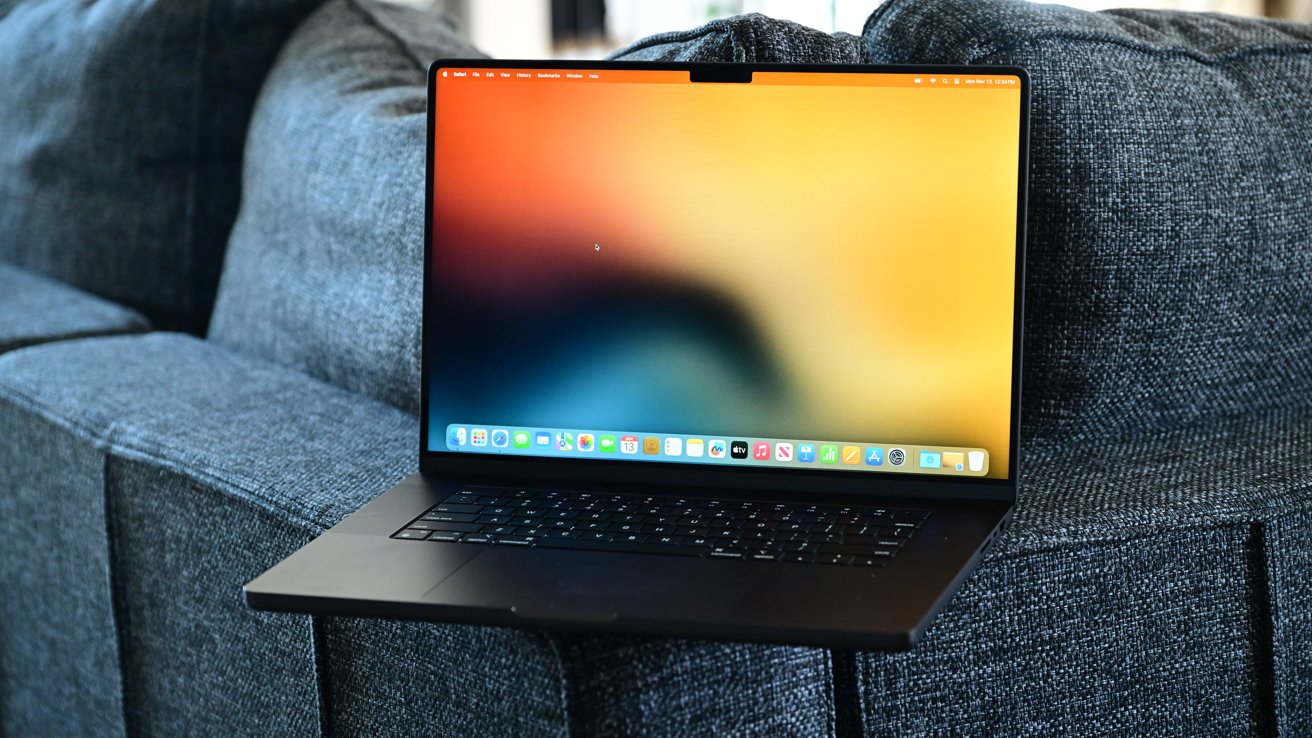
MacBook Pro 16-inch M3 Max review in Space Black
Upon retrospect, the thought that Apple would wait longer for M3 was a mistake. The company short-cycled not its M3 release, but its M3 Pro and M3 Max pattern and dropped all three chips at the same time.
In other generations, we would've seen the upgrade to the 14-inch and 16-inch MacBook Pro months after Apple brought out its latest chip generation. For M3, Apple has destroyed convention by launching three chips, including the M3 Pro and M3 Max, and made the 14-inch and 16-inch MacBook Pro among the first releases of this generation.
The decision to launch brings with it a problem for the "time is money" crowd. If they bought a top-spec M2 Max version of the 16-inch MacBook Pro in January, they would wonder if there's any point in making an upgrade after less than half a year of ownership.
We'll be talking about M3 Pro in a different piece, there is a lot to say about that unit. But, if time is money, the M3 Max is an incredibly solid upgrade over the M2 Max chip that first saw the light of day 10 months ago.M3 Max 16-inch MacBook Pro review - Design
The 16-inch MacBook Pro hasn't seen any real external changes at all. At least, if you're looking at the standard color option.
It's still inside a well-machines and finished slab of mostly-recycled aluminum that's just 0.66 inches thick when folded. It's also the same width at 14.01 inches and 9.77 inches deep, so it has the same footprint as its immediate predecessor.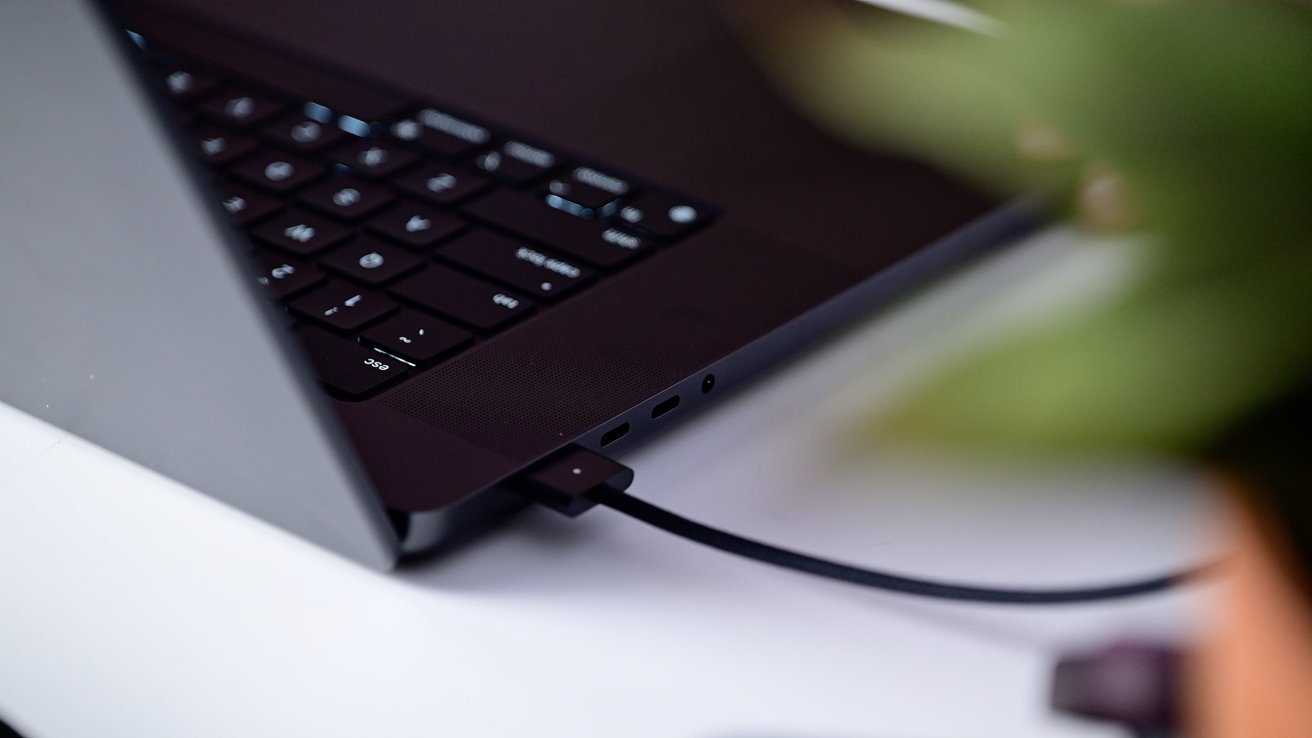
MacBook Pro 16-inch M3 Max review: New MagSafe 3 cable and Thunderbolt ports
The weight's unchanged too, at 4.7 pounds if you go for the M3 Pro, or 4.8 pounds if you go full-bore with the M3 Max.
The last one was unmistakably a MacBook Pro in nature, thanks to Apple's well-established aesthetics. The M3 version is exactly the same, with its thin bezels, solid feel, and great finish.
Except there is one highlight change to the appearance: You can get a black one. Sort of.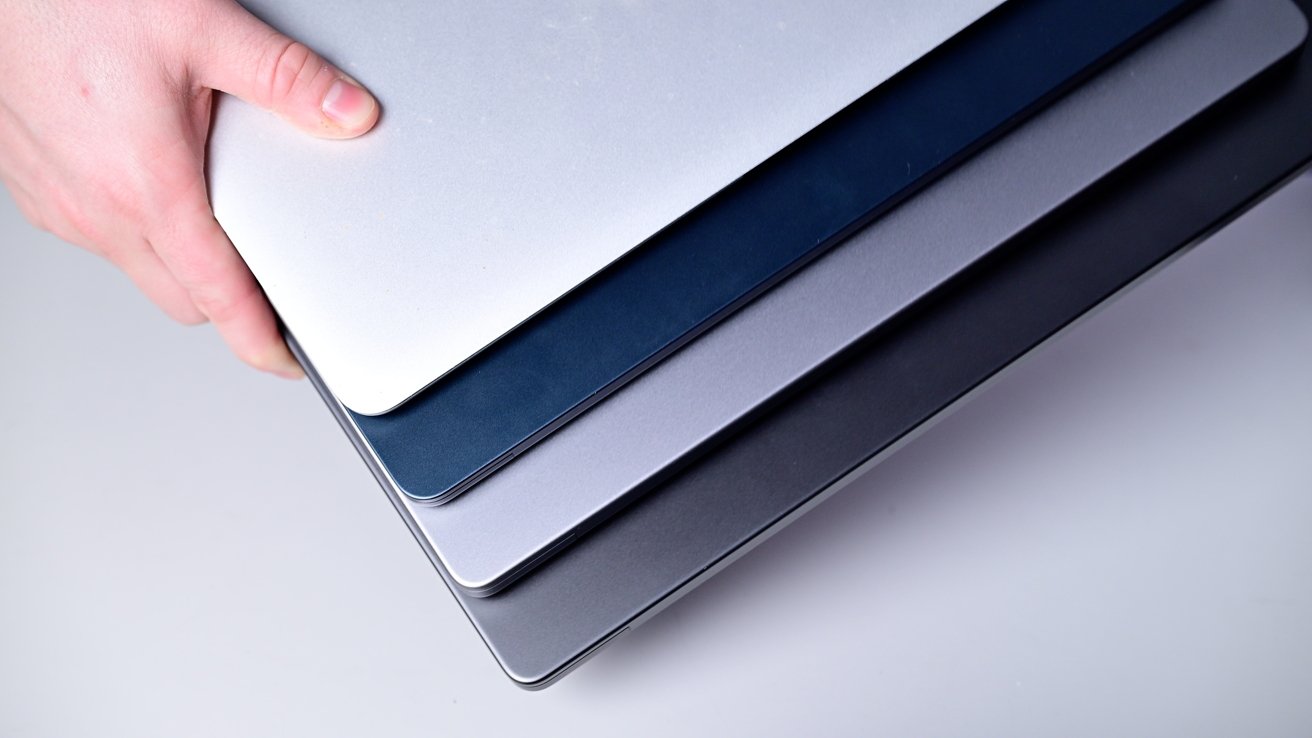
MacBook Pro 16-inch M3 Max review: Silver, Midnight, Space Gray, and Space Black colors
For the end of 2023, the Space Gray has been switched out for Space Black, which is still offered alongside the standard Silver.
It's just not that black owing more to material science and the difficulty of coloring aluminum with saturated colors than anything else. We've posted examples on social media about it, but it's more a darker gray than anything else. For this generation, at least, matte, deep black Mac enjoyers need not apply.
Opened up, you have the standard 78-key backlit Magic Keyboard, complete with its 12 full-height function keys and ambient light sensor. Touch ID is in the top-right corner for your logging-in and authentication needs.M3 Max 16-inch MacBook Pro review - Display and Audio
The new display is nearly identical to the one in the M2 Max MacBook Pro. Once again, users get to experience the 16.2-inch display, backlit by mini-LED which helps with contrast, brightness, and vivid color. That Liquid Retina XDR display is a 3,456 by 2,234 resolution, which is the same as last time.
Also unchanged is the Wide Color (P3) coverage, Apple's True Tone color-changing technology, and ProMotion. That latter point enables adaptive refresh rates of up to 120Hz, which is normal for the feature.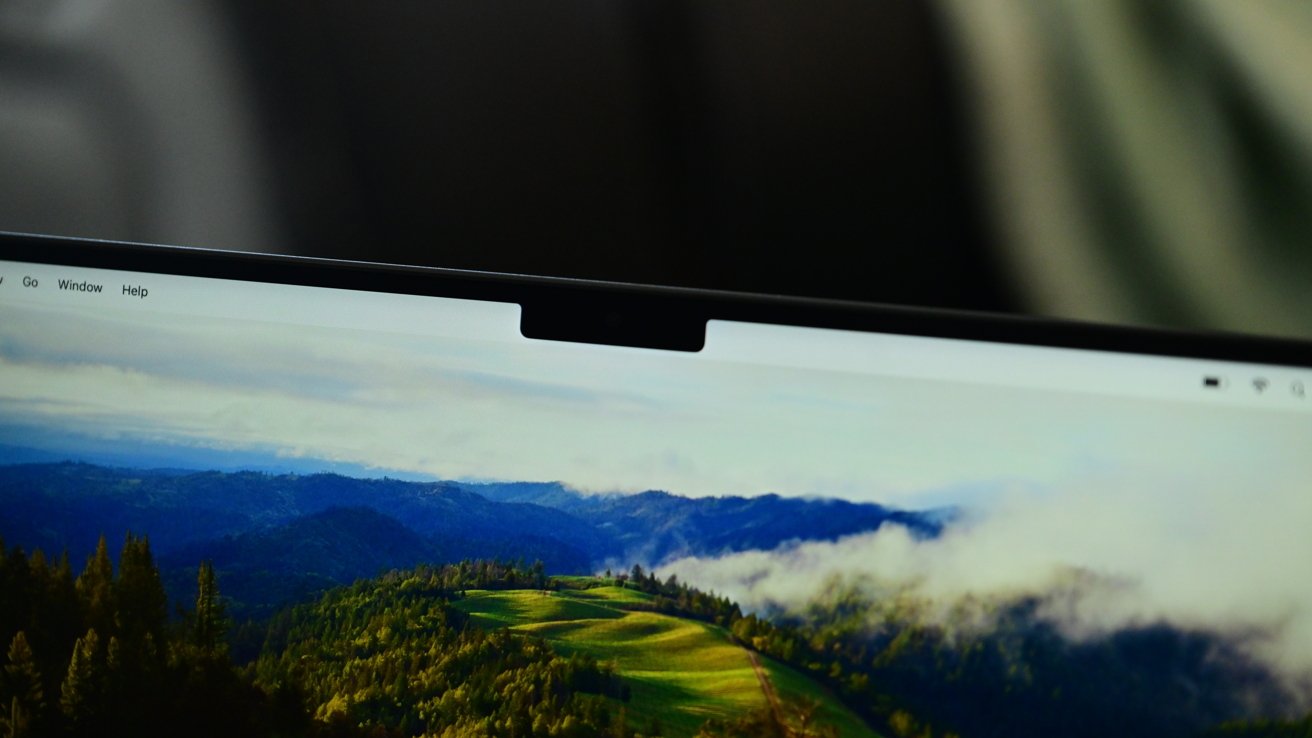
MacBook Pro 16-inch M3 Max review: The notch is unchanged
The notch reappears at the top, housing the FaceTime HD camera. Even now, Apple is still avoiding using the notch for anything else, such as Face ID, so it will continue to annoy a small subset of the audience for another generation. For us, it makes no difference, but we acknowledge that opinions vary on this.
What has changed is an oddly small element, namely brightness. If you're looking at typical SDR content, the brightness of the display now goes up to 600 nits, up from the 500 nits of the M2 generation.
This does mean that it will be brighter for looking at everyday content and for typical usage, but that benefit isn't applied for other types of image. The XDR brightness allows for 1,000 nits of sustained full-screen brightness for HDR content viewing, 1,600 nits at peak, but this is still the same sort of brightness levels you would see from its predecessor.M3 Max 16-inch MacBook Pro review - Ports, power, and periphery
After you go beyond the high performance of the M3 Max chip and the change in color options, the rest of the specifications of the 16-inch MacBook Pro are exactly the same as the M2 variant.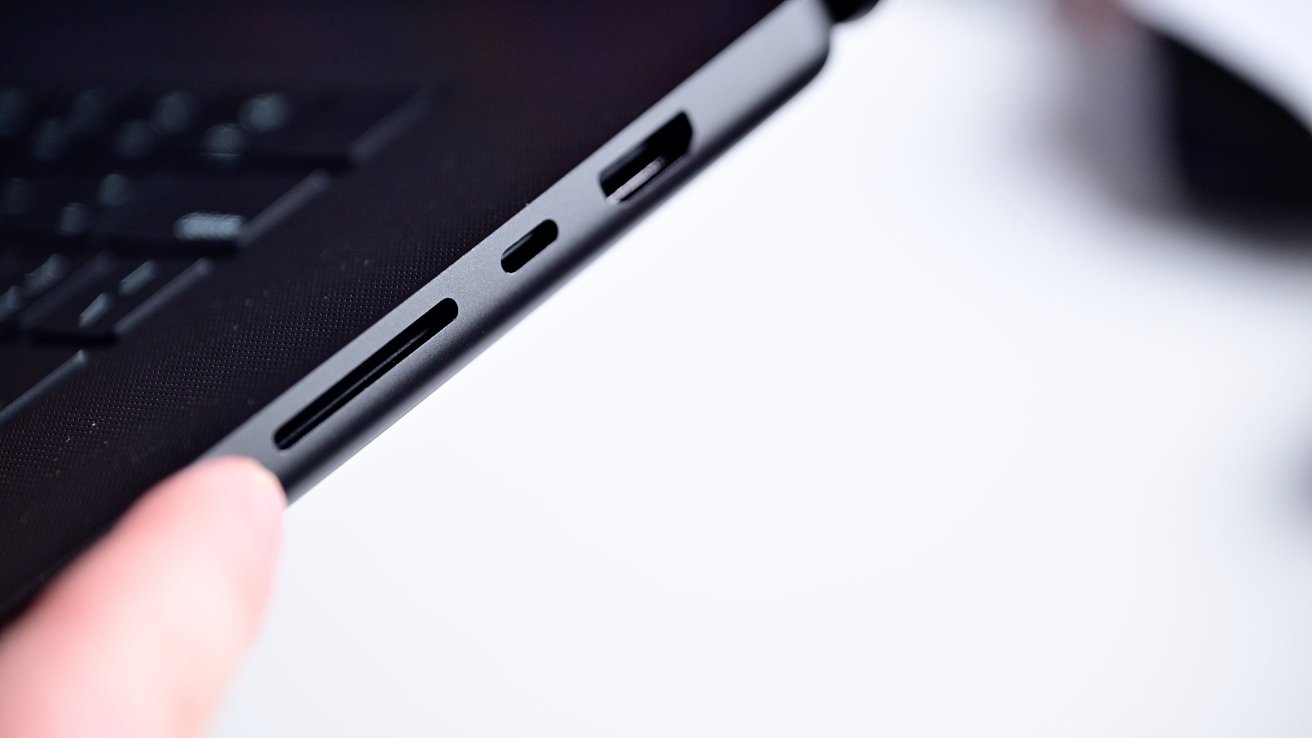
MacBook Pro 16-inch M3 Max review: The right side has an SDXC card reader, Thunderbolt port, and an HDMI output
The ports selection still consist of three Thunderbolt 4 USB-C ports as well as a HDMI port and SDXC card slot. To the rear on one side, you also have MagSafe 3.
The Thunderbolt 4 and HDMI combined with the M3 Max do allow for some extensive external video options. You can have up to three 6K 60Hz screens on the Thunderbolt connections, as well as a 4K 144Hz screen on the HDMI.
Go down to three external displays, and that HDMI option can become an 8K 60Hz screen or a 4K 240Hz version.
Audio is again dealt with by a six-speaker sound system with force-cancelling woofers, offering wide stereo sound and support for Spatial Audio when playing Dolby Atmos content. A trio of "studio-quality" mics in an array with a high signal-to-noise ratio and directional beamforming handle audio input.
For audio purists, there's support for high-impedance headphones via the 3.5mm headphone jack.
The FaceTime HD camera in the notch is the same 1080p resolution as last time, ably assisted by the M3 Max's image signal processor and computational video features.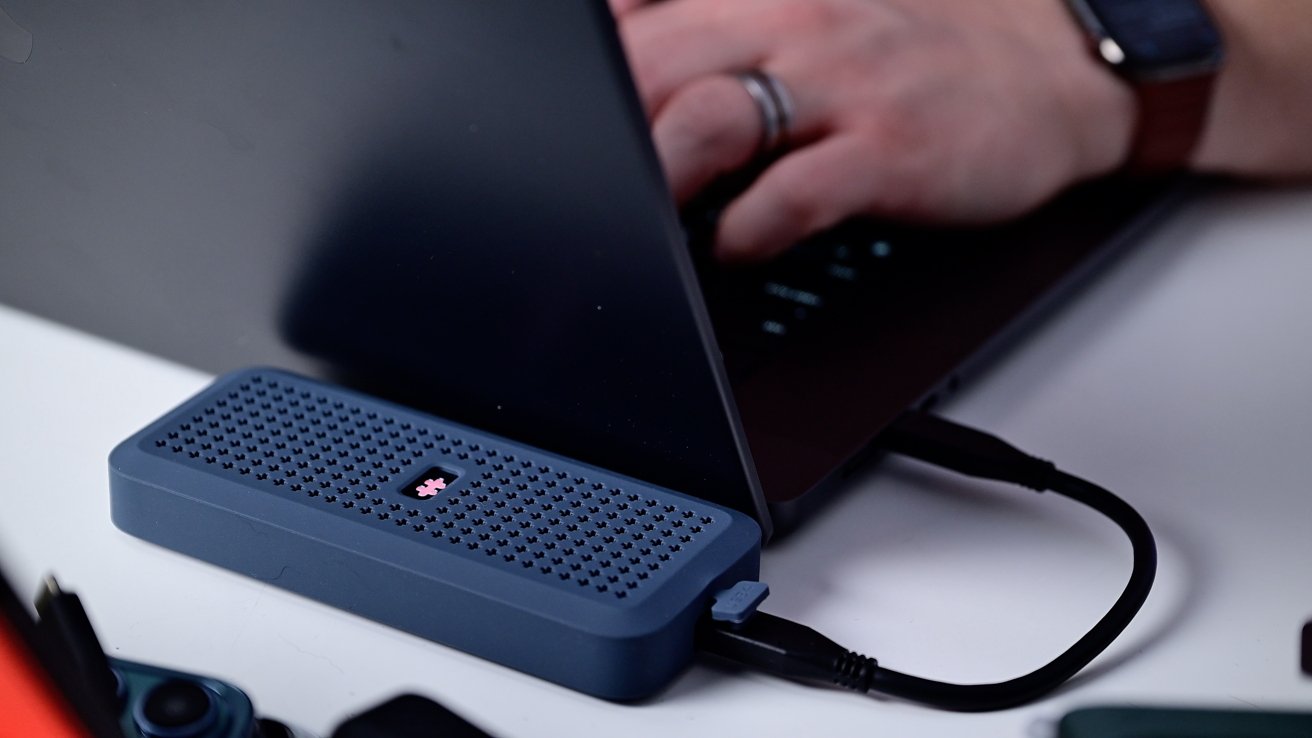
MacBook Pro 16-inch M3 Max review: Using an external SSD
On the wireless connectivity side, there's Wi-Fi 6E and Bluetooth 5.3 support yet again, though these will only reach their full potential if you're using devices or network infrastructure that support them.
Power is supplied via a 100-watt-hour lithium polymer battery, once again, which offers up to 22 hours of Apple TV app movie playback and up to 15 hours of wireless web access. This isn't any different from the M2 model, but it's safe to say there's loads of battery that will keep the machine running at maximum performance instead of throttling down like for Windows workstation laptops that will keep most Mac users happy.
There is a 140W USB-C power adapter included in the box. This works for both the included MagSafe connector, and with a USB-C cable to a Thunderbolt port.M3 Max 16-inch MacBook Pro review - Performance
At the top end of the performance scale is the M3 Max chip, which is part of the model being put under review. For this review, AppleInsider is using a top-spec configuration, consisting of the 16-core M3 Max with a 40-core GPU.
That top chip also splits its 16 CPU cores towards performance, with 12 performance cores joined by four efficiency cores.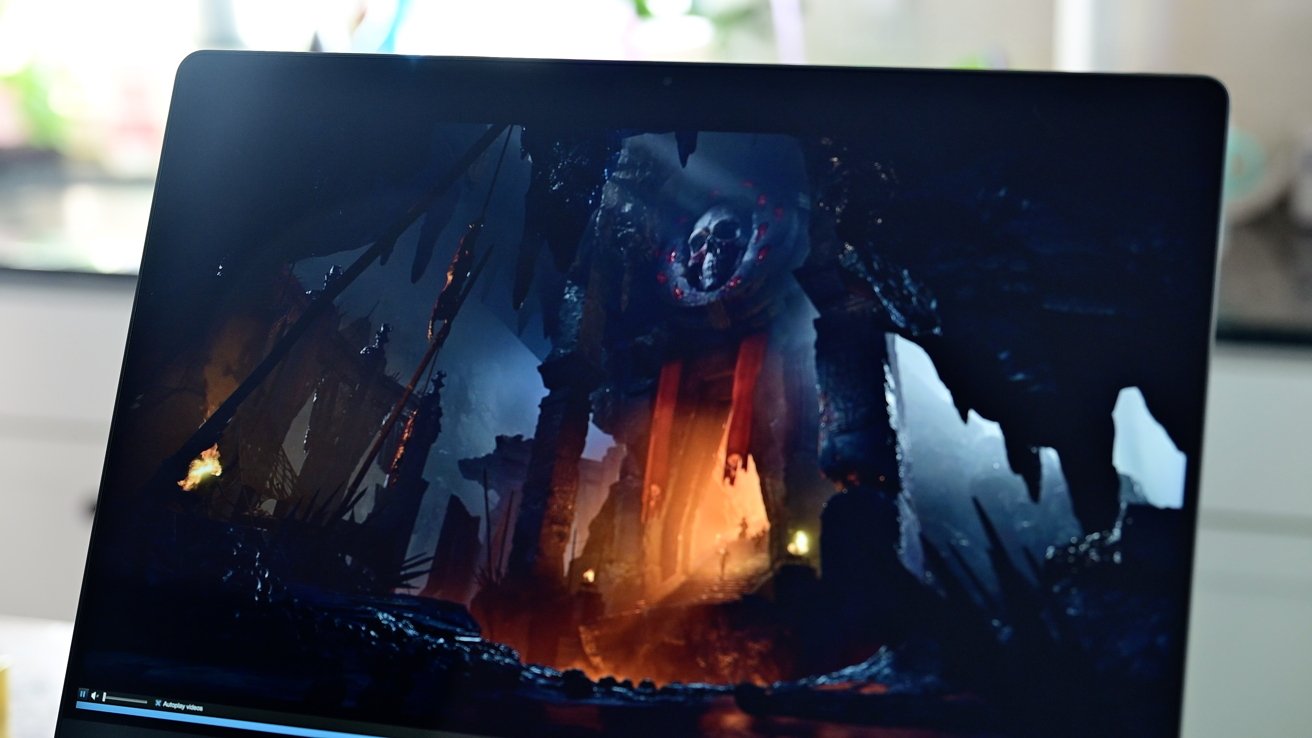
MacBook Pro 16-inch M3 Max review: More games than ever arrive on Mac
It's also bundled with 128GB of unified memory, though you can also configure it with 48GB or 64GB. Even better, the 400GB/s of memory bandwidth should help eke out as much performance as possible from the chip.
If you didn't want top-end power, there's other configurations available. For a start, you could get the M3 Max with a 14-core CPU and 30-core GPU, though the memory options then change to either 36GB or 96GB.
This could be quite confusing if you have a particular amount of memory you want, but if you're thinking about the chip first before memory, it's not that hard to figure out.
There's also a 12-core M3 Pro option if to save some money, complete with an 18-core GPU, though you're stuck with 18GB or 38GB of memory alone.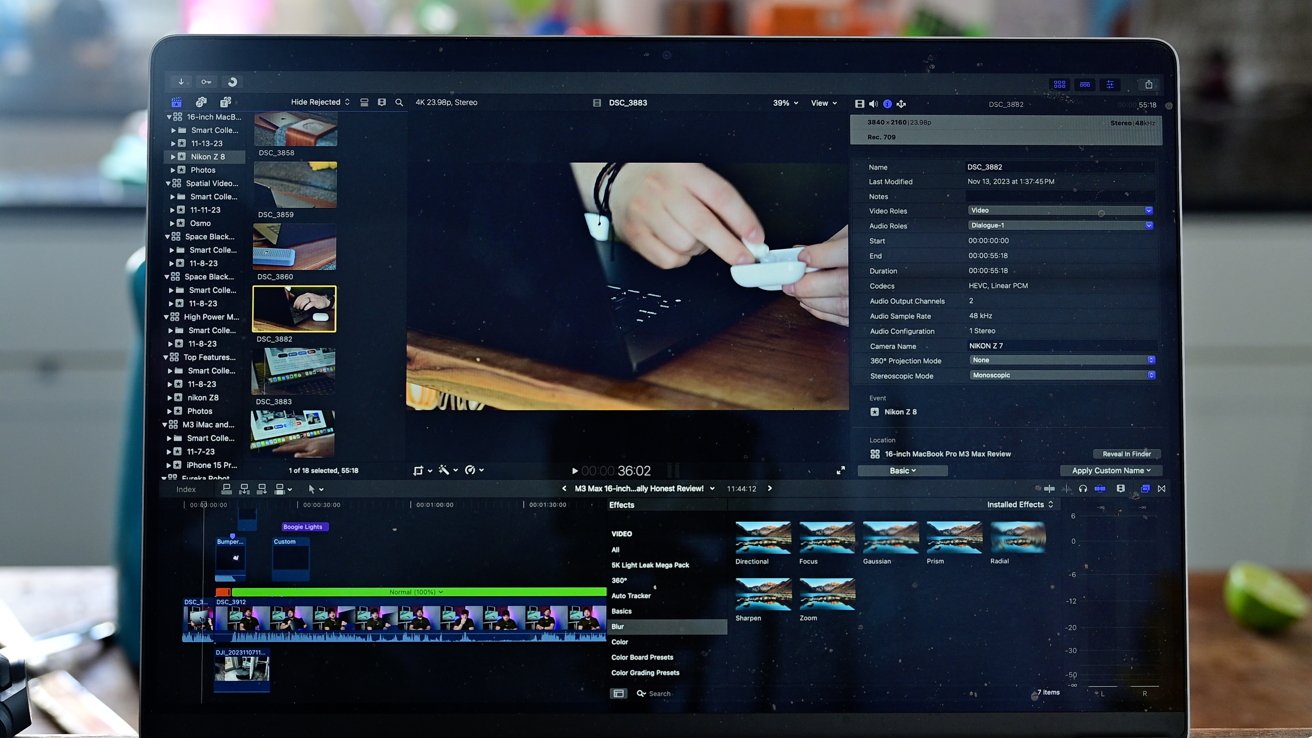
MacBook Pro 16-inch M3 Max review: Editing in Final Cut Pro
As well as high-performing core counts and a bigger GPU, there are other elements, including the 16-core Neural Engine, which is now capable of 18 trillion operations per second.
On the GPU side, Apple's also included hardware-accelerated ray tracing, which will help games and graphical applications, such as 3D renderers like Blender. More useful will be Dynamic Caching, which optimizes memory to increase the average GPU utilization.
The Media Engine provides hardware-accelerate video encoding and decoding, has also been given a bit of a boost. The existing video decode engines, two video encode engines, and pairs of ProRes encode and decode engines has been joined by AV1 decoding support, on top of H.264, HEVC, ProRes, and ProRes RAW.
Apple has made lots of claims about the performance of its M3 generation, including that it is up to 2.5x faster than a 16-inch MacBook Pro with M1 Max.
In Apple's real-world examples of how fast this is, noise reduction in DaVinci Resolve Studio is 65% faster than the M1 Max model, while Maxon Redshift rendering is up to 2.5 times faster.
Geekbench Single-Core benchmarks
On a benchmark basis, the full-whack M3 Max gets 3,209 on Geekbench's single-core test, and 21,202 on the multi-core. Against the M2 Max at 2,729 and 14,403 respectively, that's a massive leap forward in performance.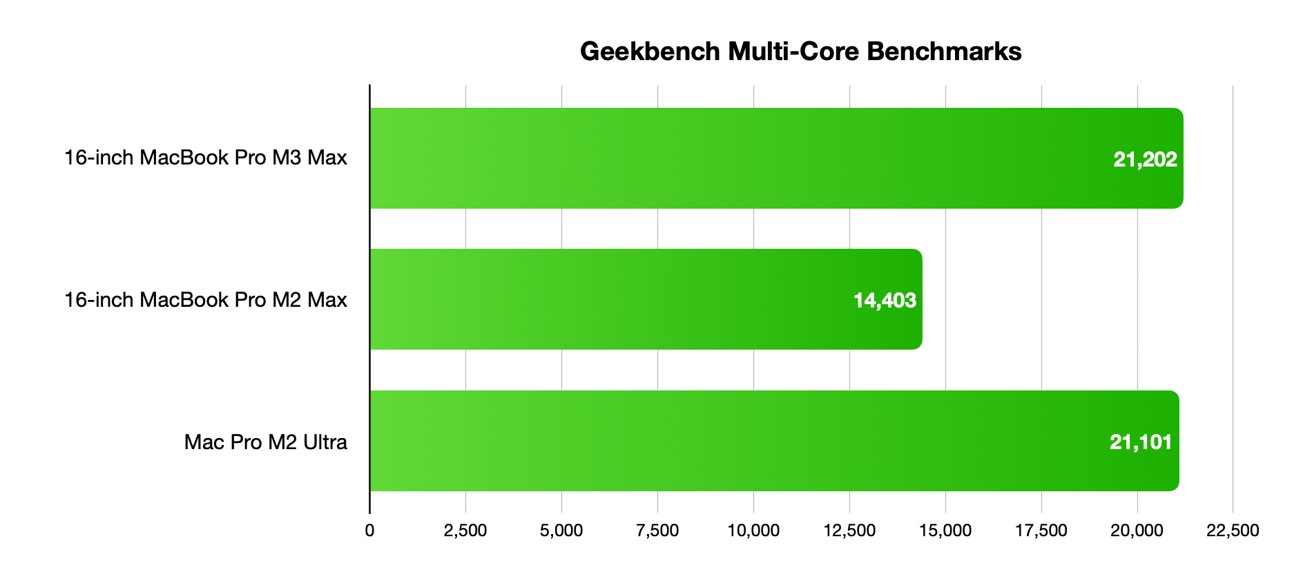
Geekbench Multi-Core benchmarks
Considering that the M2 Ultra can score 2,766 and 21,101 respectively under the same tests, it certainly underlines what the M3 Max can offer users.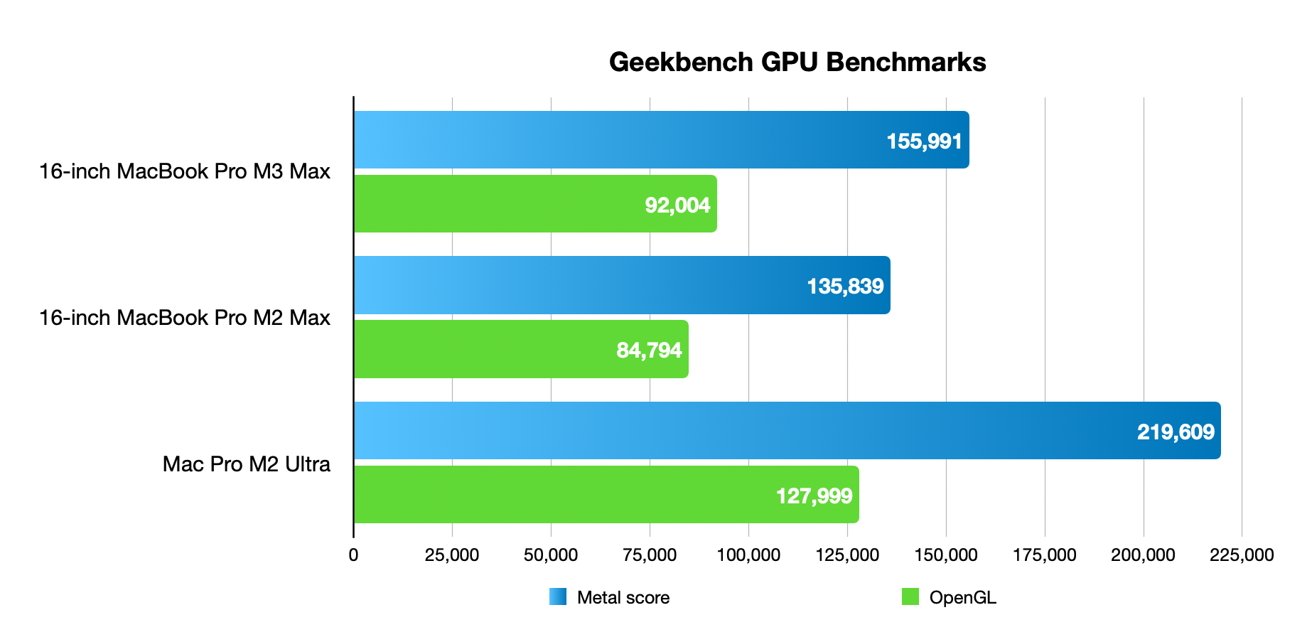
Geekbench Metal and OpenGL benchmarks
On Geekbench's OpenGL and Metal tests, the M3 Max makes an admirable effort with considerable improvements over the M2 Max. On Metal, the M3 gets 155,991 versus the M2's 135,839, while OpenGL results are 92,004 and 84,794 respectively.
Of course, the M3 Max's GPU can't meet the 219,609 Metal and 127,999 OpenGL scores set by the Mac Pro with the M2 Ultra. With 60 GPU cores to play with in our test, it has far more than the 30 or 40 cores you can configure an M3 Max chip with.
What we're looking at here, though is M2 Ultra Mac Studio or 2023 Mac Pro minus PCI-E CPU performance delivery, in a portable package.M3 Max 16-inch MacBook Pro review - High-end professional workflow performance
Our main test-beds here are three-fold.- 2023 MacBook Pro 16-inch with M3 Max, 128GB of RAM, and 8TB of storage
- Mac Pro 16-core 3.2 Ghz Intel Xeon W, with 1TB RAM, 4TB SSD, and an Afterburner card
- 2023 Mac Pro with M2 Ultra with 60-core GPU, 192GB of RAM, and 4TB of SSD space
As with our Mac Pro review, one of the tested workflows includes high-altitude image processing, and identification of subjects of interest on the ground, with data pulled from a 3TB database. In all of these tests, the database was loaded on the internal SSD.
The code is Apple Silicon-native, and leverages the Afterburner card and Apple's Video Toolkit.
In 2013, this test took about a full day to complete on the hardware of the day.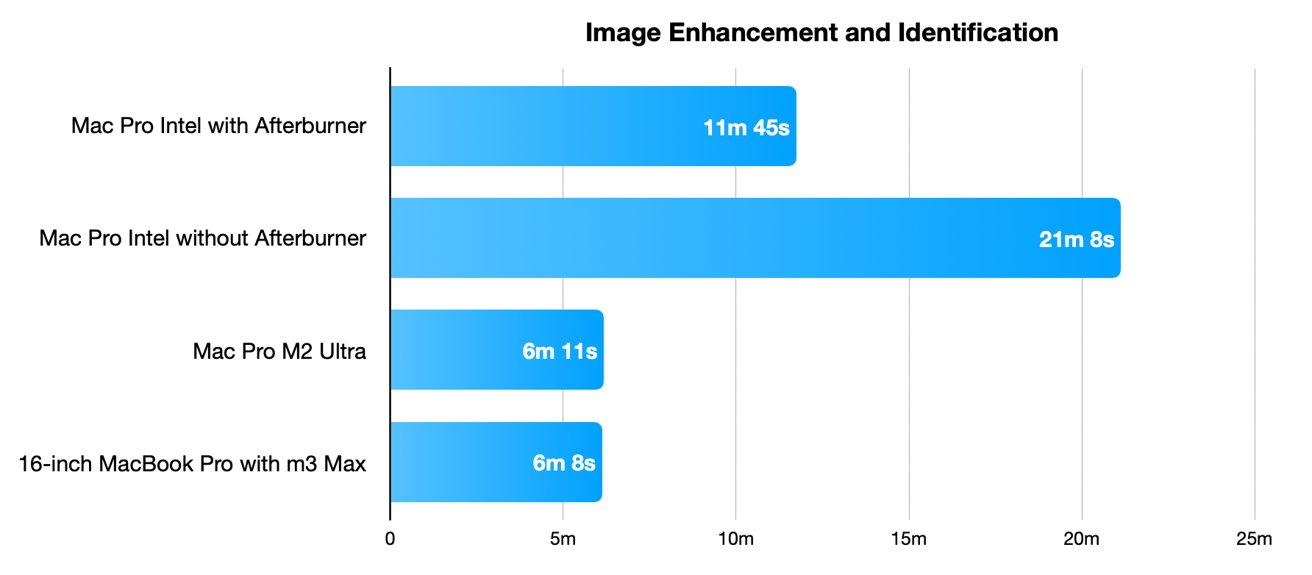
Image Enhancement and Identification testing
Another workflow that I'm more frequently using as of late is simulating fluid flow over a moving body, such as over a boat hull. This is a calculation-heavy job, and doesn't have a lot of GPU involvement. It is also Intel-native code, and run on the Mac Pro with Rosetta.
Complex Fluid Flow Over A Moving Body tests
The third workflow I'm also using more than I have been is a simulation of water and steam flowing through a complex engineered system. It includes heat transfer and fluid flow, and is also calculation-heavy. It is also Apple Silicon-native code.
Complex Fluid Flow Through Piping test results
The fourth workflow is stoichiometry. It remains a very complex chemical equilibrium reaction calculation and simulation involving the interaction of organic compounds with inorganic ones. It is also Apple Silicon native code.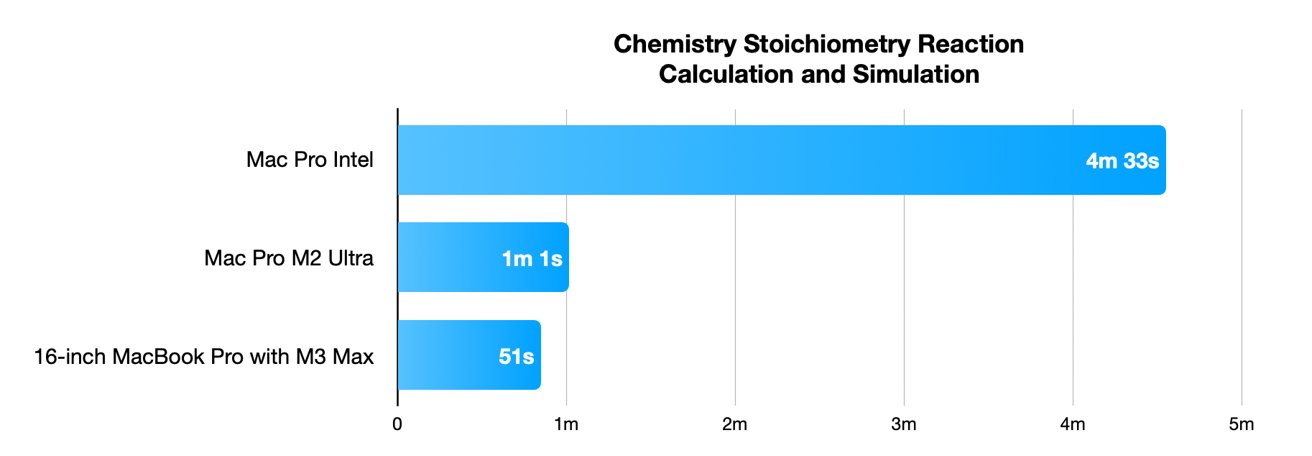
Chemistry Stoichiometry Reaction Calculation and Simulation test results
As before, our final workflow is an Xcode compilation of the application used in the third benchmarking run.
Xcode Compile test results
The similarities in delivery speed were surprising. We'd expected to see a bit more of a gap given the differences in RAM between the Apple Silicon units. RAM pressure was the steepest on the third workflow, and we feel that that one could be faster with more RAM on Apple Silicon, but the job still got done.
We re-ran the tests on battery, in performance mode, and the results didn't change. Even outside of performance mode, the delivered speeds were only a few seconds slower in every case.
As always, thanks to my partners across several industries for letting me use their computers for testing and evaluation. And, we deeply appreciate their enthusiasm for this process spanning the 2023 Veterans Day weekend.M3 Max 16-inch MacBook Pro review - Pricing
As usual, a fully-spec'd out 16-inch MacBook Pro with M3 Max comes at a hefty cost -- but remains well short of Mac Pro pricing. With the top chip, 128GB of memory, and the maximum 8TB of storage, the price is $7,199.
Of course, part of the problem is that Apple's upgrade charges are high. Apple doesn't use magic flash that nobody else uses, nor does it have particularly amazing RAM. They charge like they do, though.
The easiest way to cut costs is to reduce the SSD capacity, since going external is easy. A 1TB storage drive is the lowest it can go, and can save users $2,200 in the process.
The memory upgrade is also painful for the wallet, with the difference between 48GB and 128GB being a cool $1,000. This is the true Apple tax.
Going for the still-ample 48GB of unified memory and the usable 1TB SSD brings the cost down to $3,999. Most of the performance at almost half the top-spec price.
The Apple Silicon Mac Pro that we used for testing, albeit with more RAM than in the MacBook Pro, more Thunderbolt, and PCI-E, comes in at $10,799 (check prices). The M2 Ultra Mac Studio, also with more RAM, hits $8,799.M3 Max 16-inch MacBook Pro review - Raw portable power
Apple loves its creatives. It uses them in most of its advertising, while speaking about power, flexibility, and setting imagination free. But, it's a dirty secret that the main workflows on most MacBook Pros when looked at a holistic whole, are simple. It's mostly Word, Excel, some light entertainment, and so forth.
Nearly all of the MacBook Pro line shipped and sold aims at those office users, and it's still-widening enterprise customer base, with some light creative or engineering work thrown in. This high-end 16-inch MacBook Pro is very clearly not.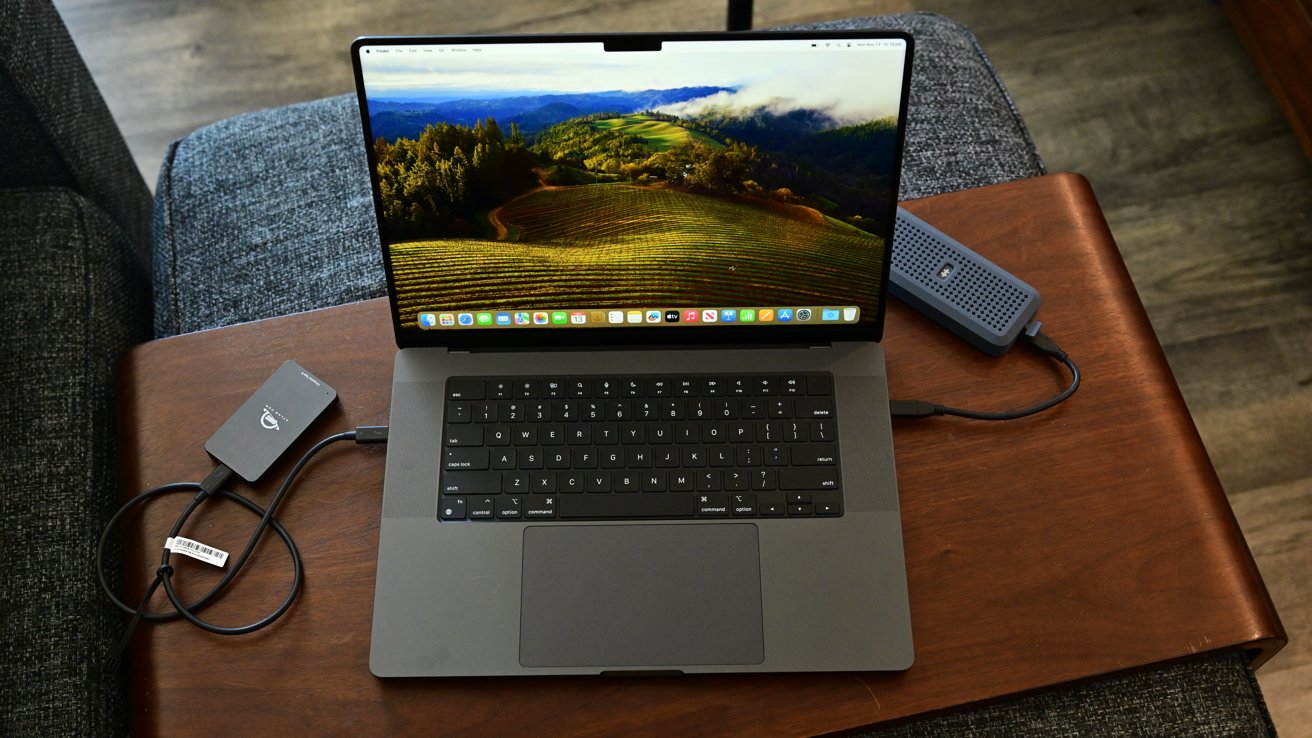
MacBook Pro 16-inch M3 Max review: Great portable power
Even so, Pro means nothing as it pertains to Apple's product line other than "not entry level" and it's not meant anything tangible beyond that for many years now. The 2023 crop of MacBook Pro hardware spans a range from "just a bit better than MacBook Air" to this unit, which is delivers more or less the same performance as the 2023 Mac Pro.
There are already a lot of nonsensical tests popping up on YouTube on the other side of the MacBook Pro product line than our test unit in this review. Notably, we've seen a few from who you'd expect to see them from, where applications are run with minimum recommended requirements significantly higher than the hardware that it's running on, run in conjunction with other "real-world" applications to try and prove a pre-ordained conclusion that was decided upon before the testing even started.
None of this proves anything more than if you bog down a computer with applications that it doesn't have the resources to run, it will unsurprisingly not run well. This is not shocking.
Nobody's going to buy a 8GB MacBook Pro for dynamic fluid flow calculations, or Blender rendering. Doing those tests and holding them up anything beyond entertainment remains nonsensical. The maxim "the right tool for the right job" -- and using that tool appropriately -- remains apt.
The 16-inch MacBook Pro with M2 Max is that right tool for that complex calculation while still doing other things on the computer. And it makes us look forward to the M3 Ultra Mac Studio.M3 Max 16-inch MacBook Pro review - Pros
- Great and sturdy design
- M3 Max performance is about the same as the M2 Ultra
M3 Max 16-inch MacBook Pro review - Cons
- Borderline extortionate RAM and SSD upgrade pricing
- Still no way to upgrade after initial purchase
Rating: 4.5 out of 5
Where to buy the M3 Max 16-inch MacBook Pro
Apple's M3 Max 16-inch MacBook Pro is heavily discounted exclusively for AppleInsider readers. Save $250 on every M3 Max model (or $200 on M2 Pro models) with promo code APINSIDER at Apple Authorized Reseller Adorama. You can find the best MacBook Pro deals, including offers from Amazon, B&H, and Best Buy, in our M3 16-inch MacBook Pro Price Guide.
Read on AppleInsider

- 2023 MacBook Pro 16-inch with M3 Max, 128GB of RAM, and 8TB of storage
-
Apple pauses iOS 18, macOS 15 work to stomp bugs now
Apple has reportedly stalled development on iOS 18, macOS 15, iPadOS 18, and other major updates it will introduce in 2024 to work on fixing bugs.
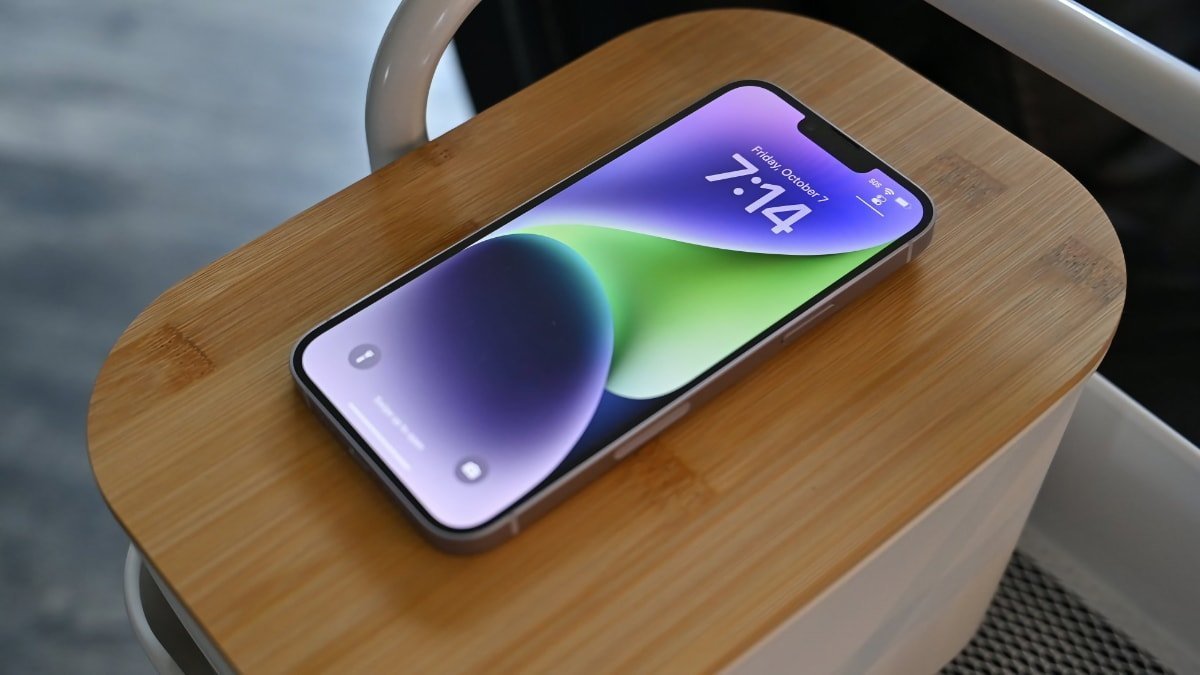
The expected introduction of iOS and iPadOS 18, macOS 15, and Apple's other milestone releases in WWDC 2024 and their eventual release in roughly ten months time seems like a long way off. However, Apple has allegedly decided to pause all work on the future operating systems, in favor of a period of bug fixing.
According to Bloomberg, Apple informed employees of the delay at the start of November, people with knowledge of the announcement explained. Instead of working on new items, engineers are instead working to fix issues and improve the performance of what has already been produced.
After the discovery of what was deemed too many bugs by software lead Craig Federighi's team, it was decided that the engineers would go on a week-long improvement sprint. Following the end of the pause, engineers will return to working on new features.
While a delay in development can be a problem in may cases, a delay of a week with such long development times is a prudent way to try and minimize bugs that could end up in the final software.
Read on AppleInsider
-
Apple's Crash Detection saves another life: mine
Of all the new products I've reviewed across 15 years of writing for AppleInsider, Apple Watch has certainly has made the most impact to me personally. A couple weeks ago it literally saved my life.
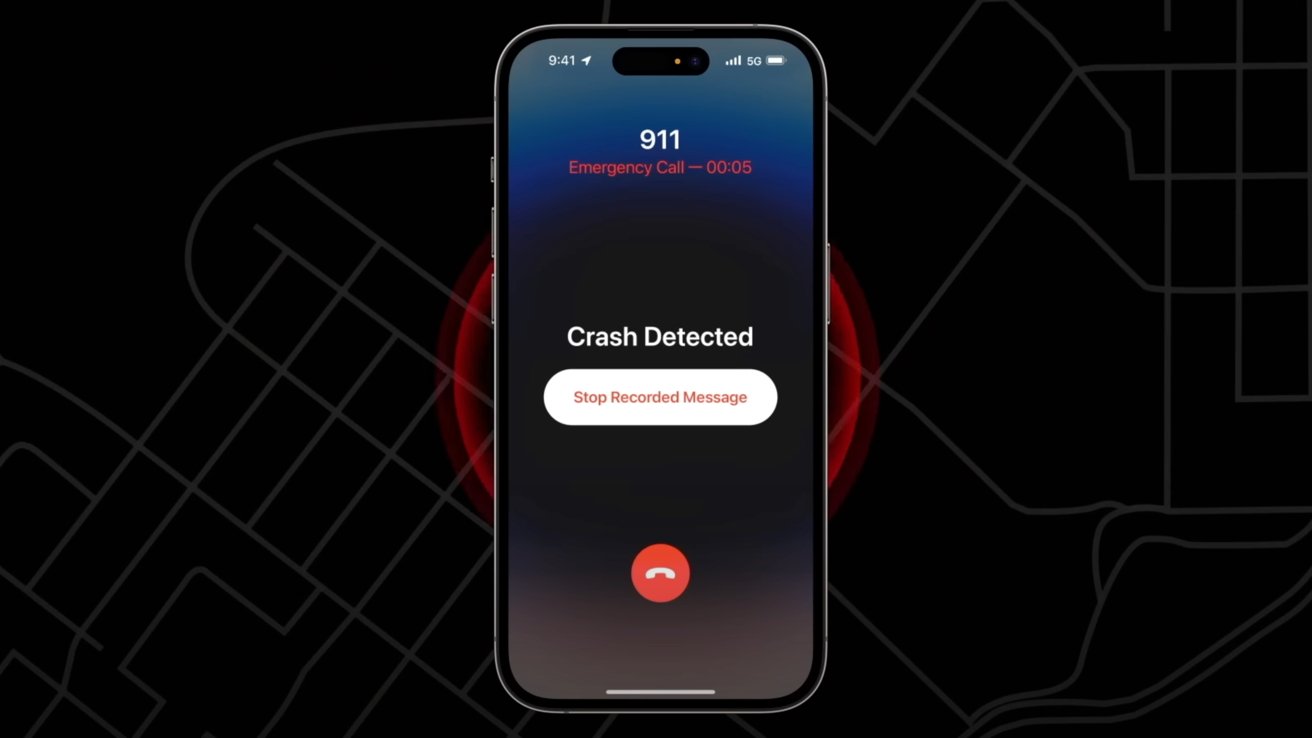
Apple's Crash Detection can and has saved lives
I'm not the first person to be saved by paramedics alerted by an emergency call initiated by Crash Detection. There have also been complaints of emergency workers inconvenienced by false alert calls related to events including roller coasters, where the user didn't cancel the emergency call in time.
But I literally have some skin in the game with this new feature because Crash Detection called in an emergency response for me as I was unconscious and bleeding on the sidewalk, alone and late at night. According to calls it made, I was picked up and on my way to an emergency room within half an hour.
Because my accident occurred in a potentially dangerous and somewhat secluded area, I would likely have bled to death if the call hadn't been automatically placed.Not just for car crashes
Apple created the feature to watch for evidence of a "severe car crash," using data from its devices' gyroscopes and accelerometers, along with other sensors and analysis that determines that a crash has occured and that a vehicle operator might be disabled or unable to call for help themselves.
More than five hours later I was shocked how much blood was on the back of my ER mattress--and later, how much I saw on the sidewalk!
In my case, there was no car involved. Instead, I had checked out a rental scooter intending to make a quick trip back to where I'd parked my car.
But after just a couple blocks, my trip was sidelined by a crash. I was knocked unconscious on the side of a bridge crossing over a freeway.
A deep gash above my eye was bleeding heavily. I began losing a lot of blood.
I didn't regain consciousness for another five hours, leaving me at the mercy of my technology and the health workers Crash Detection was able to contact on my behalf.Crash Detection working as intended
Even though I wasn't driving a conventional vehicle, Crash Detection determined that I had been involved in a serious accident and that I wasn't responding. Within 20 seconds, it called emergency services with my location. Within thirty minutes I was loaded in an ambulance and on the way to the emergency room.
When I came to, I had to ask what was happening. That's the first I found out that I was getting my eyebrow stitched up and had various scrapes across the half of my face that I had apparently used to a break my fall. I couldn't remember anything.
Even later after reviewing the circumstances, I had no relocation of an accident occurring. When visiting the scene of the crash, I could only see the aftermath. Blood was everywhere, but there was not enough there to piece together what exactly had happened.
The experience was a scary reminder of how quickly things can happen and how helpless we are in certain circumstances. Having wearable technology watching over us and providing an extra layer of protection and emergency response is certainly one of the best features we can have in a dangerous world.
Almost always, I find myself in the position of making difficult decisions and figuring out how to get out of predicaments. But in the rare occasions where I've been knocked out which has only happened a few times in my entire life, there's a more difficult realization that I'd be completely powerless in the face of whatever problems might occur.
With the amount of blood that I was losing, I couldn't have laid there very long before I would have died. Loss of consciousness and blood is a bad combination for threatening brain damage, too.
I am grateful that I'm living in the current future where we have trusted mobile devices that volunteer to jump in to save us if we are knocked out.Who would opt-in to Crash Detection
Last year, Apple's introduction of Crash Detection on iPhone 14 models, Apple Watch Series 8, and Apple Watch Ultra, was derided by some who worried that the volume of false alerts would be a bigger problem than the few extra lives that might be saved by such a tool.
There were false alerts noted at ski lifts, roller coasters, and by other emergency responders who noted an uptick in calls detailing an incident where the person involved didn't respond to explain it wasn't actually an emergency.
Several observers insisted at the time that the Crash Detection system should be "opt-in," similar to the Fall Detection feature Apple had introduced on Apple Watch to report less dramatic accidents suffered by people over 55.
However, it's impossible to have the system only ever working when it is essential. In my situation, I wouldn't have thought to turn on a system to watch me ride a scooter a few blocks. I probably would have assumed that a scooter ride was less risky than driving, despite having no seatbelt, no airbag and no other protective gear.
So I'm also particularly glad Apple doesn't restrict Crash Detection only to car accidents!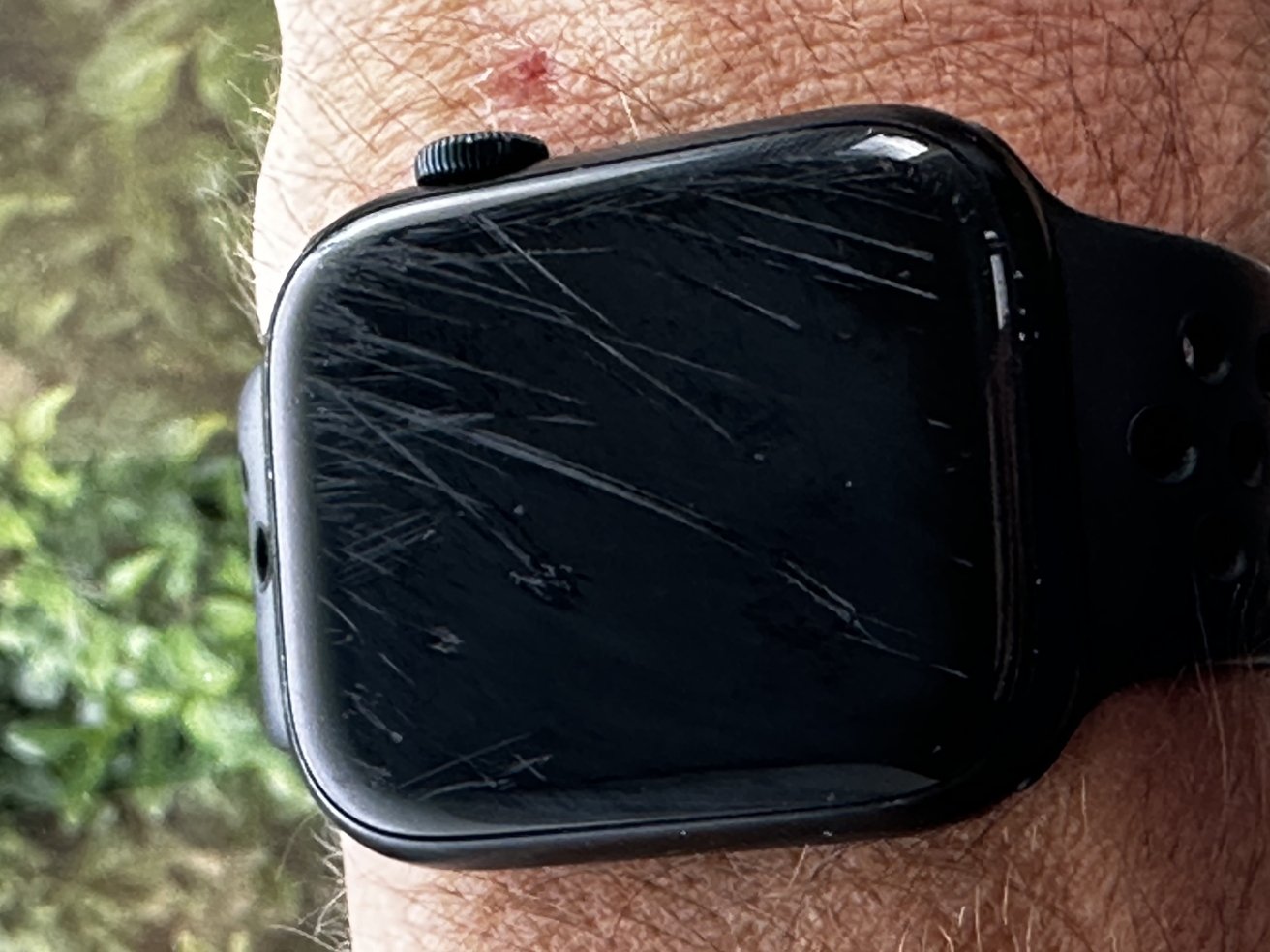
My Apple Watch still works but was scratched up pretty well
The fact that my watch and phone had been monitoring me for over a year without incident before a situation occurred where they literally could spring into action to save me is based entirely upon the idea that they are working in the background, not something I'd need to assume I needed. That's the right assumption to make. It literally saved me.
Crash Detection is a primary example of a new, innovative iOS feature update that adds tremendous value to the products I already use, without any real thinking on my part. It just works. And more importantly, it saved my life when it did.Exercise your Emergency Contacts
Despite having an iPhone that's set up with a European phone number and home address, Crash Detection "just worked" here in the United States. It dialed the right number for the location where I crashed, and getting me help efficiently and quickly. That's great.
However, I realized after I woke up that I had two emergency contacts that should also have been notified. My phone did its job correctly, but in both cases I'd listed both my partner and a family member with old phone numbers they don't still use. That meant that Crash Detection had called the police for me, but wasn't able to notify my designated emergency contacts.
If you haven't taken a recent look at your emergency contact data, now might be a good time to check to make sure that everything is in order. Note that when you update a phone number, it doesn't necessarily "correct" your defined emergency contacts.
You may need to delete and reestablish your desired emergency contact and their phone number, as the system only calls the specific contact number you've supplied. It doesn't run through your contact trying each number you've ever entered for that person.
In my case, there was another Apple service that jumped in to help. Because I was sharing my location with iCloud, it was easy for my partner in another time zone, far away, to find out where I had been taken by using the Find My app, and then to call the hospital to find out my condition.
But if Crash Detection hadn't been working, I may not have survived-- or things could have ended up much worse: badly injured or even mugged while laying unconscious in a sketchy area in the middle of the night.
I'm not the only AppleInsider staffer whose life was saved by the Apple Watch, and I probably won't be the last. So thanks, Apple!
Read on AppleInsider








-
Mac mainstay Audio Hijack adds automation transcription
The go-to app for recording absolutely anything on a Mac, Audio Hijack, has been updated to add Whisper-based AI transcription for any recordings.
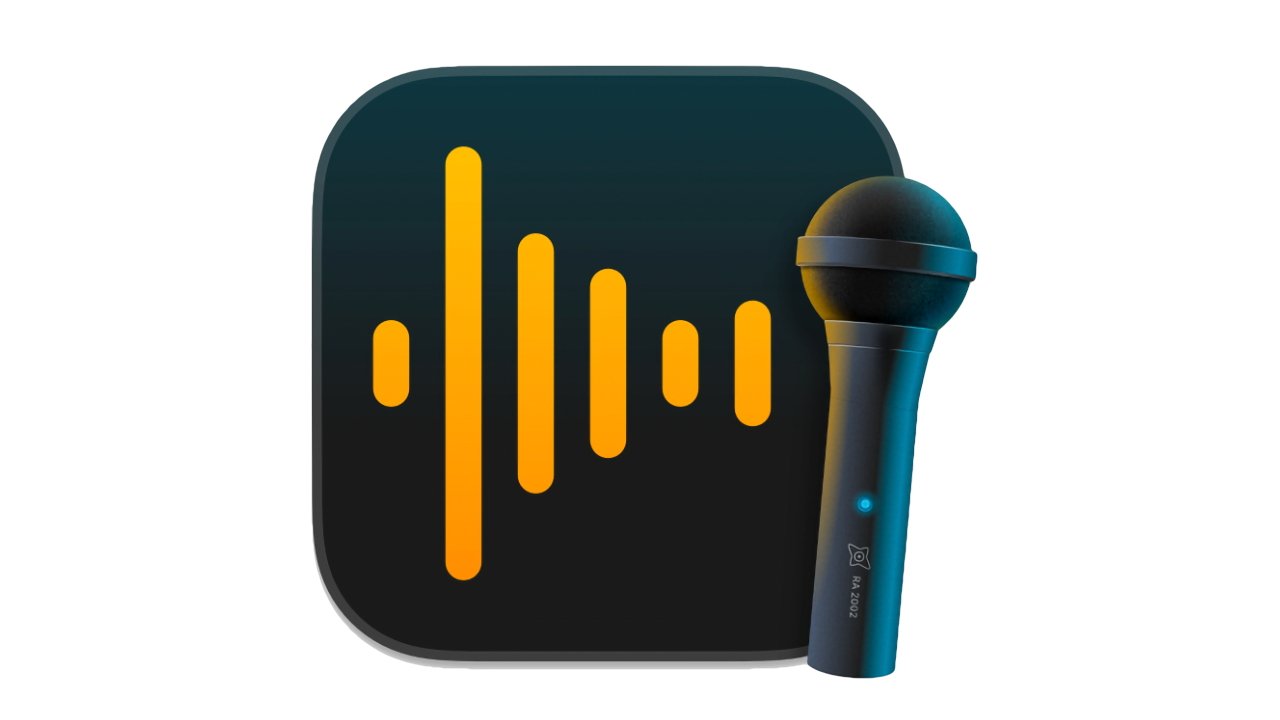
Audio Hijack from Rogue Amoeba is a Mac favorite
It's the pro audio app used by any Mac user who needs to record any audio. And it's been like that since Steve Jobs decided to save it against the wishes of the recording industry.
Now, with Audio Hijack 4.3, the app can simultaneously create a transcription of audio and record it using what's called a Transcribe block. The app works as a series of building blocks representing what you want to record and what you want to do with that audio.
So, to record your microphone, for instance, you can drag an Input Device block onto the Audio Hijack canvas, then say what connected device you want recorded.
Then you might have just an Output Device, and through that, you tell Audio Hijack to route the recording to your headphones instead of your speaker.
What makes Audio Hijack so useful is that you can string together any number of blocks. So have one that records sound from Safari, then saves it as an MP3 file while playing out through the Mac's speakers -- and now while also transcribing.
To set up the transcription for the first time, users have to drag the Transcribe block out onto the canvas and then click on it. When they do, the app offers options to do with the quality of transcription and where to save transcribed text files.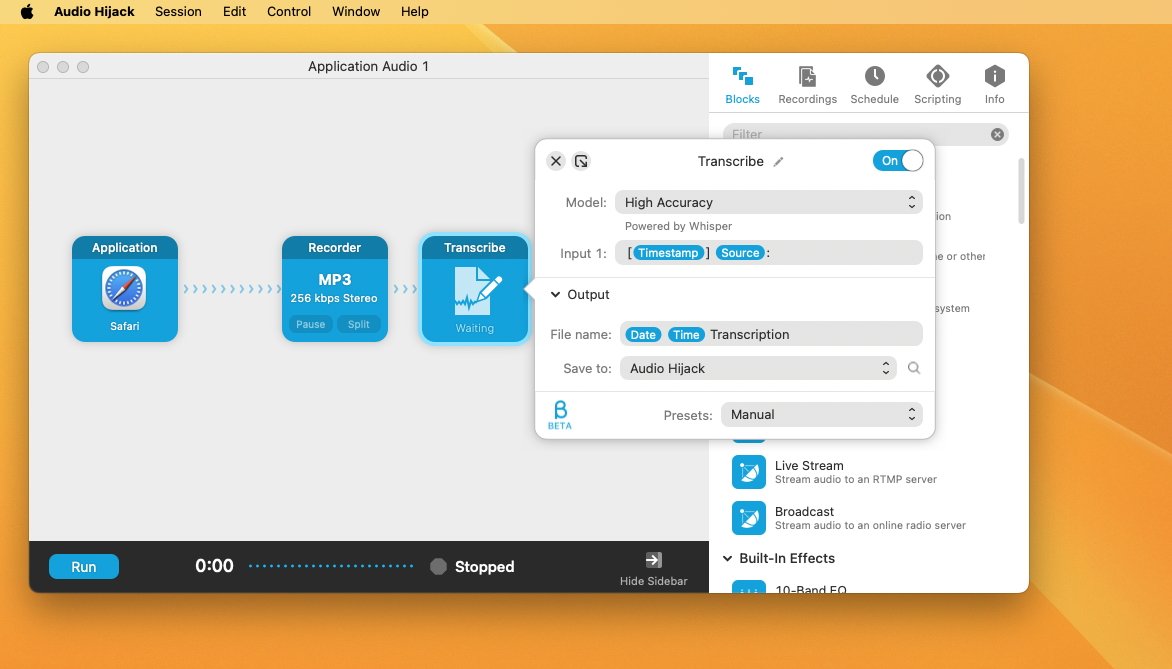
Audio Hijack has added a Transcribe block that can be just dragged into any recording setup
There are two quality options: High Accuracy and Low Resources. The latter is quicker and takes up less disk space with its AI-based Large Language Module (LLM), while the former is the one to use unless time and disk space are short.
It can then take a few minutes for the LLM to download, but it's always ready after that.
From then, users can add the Transcribe block to any canvas or any selection of audio recording settings. Once the Run button is pressed to record the audio, the transcription just happens automatically.
There's no extra cost for the transcription, nor any limitation on the recording length or the number of recordings that can be transcribed.
Rogue Amoeba's Audio Hijack 4.3 costs $77 direct from the developer. It's a free update to existing version 4 users, and version 3 owners can upgrade for $35.
Read on AppleInsider

-
First M3 benchmarks show big speed improvements over M2
At its event on Monday evening, Apple unveiled the M3, M3 Pro, and M3 Max chips, and recent benchmark tests have provided data to support Apple's claims for speed.
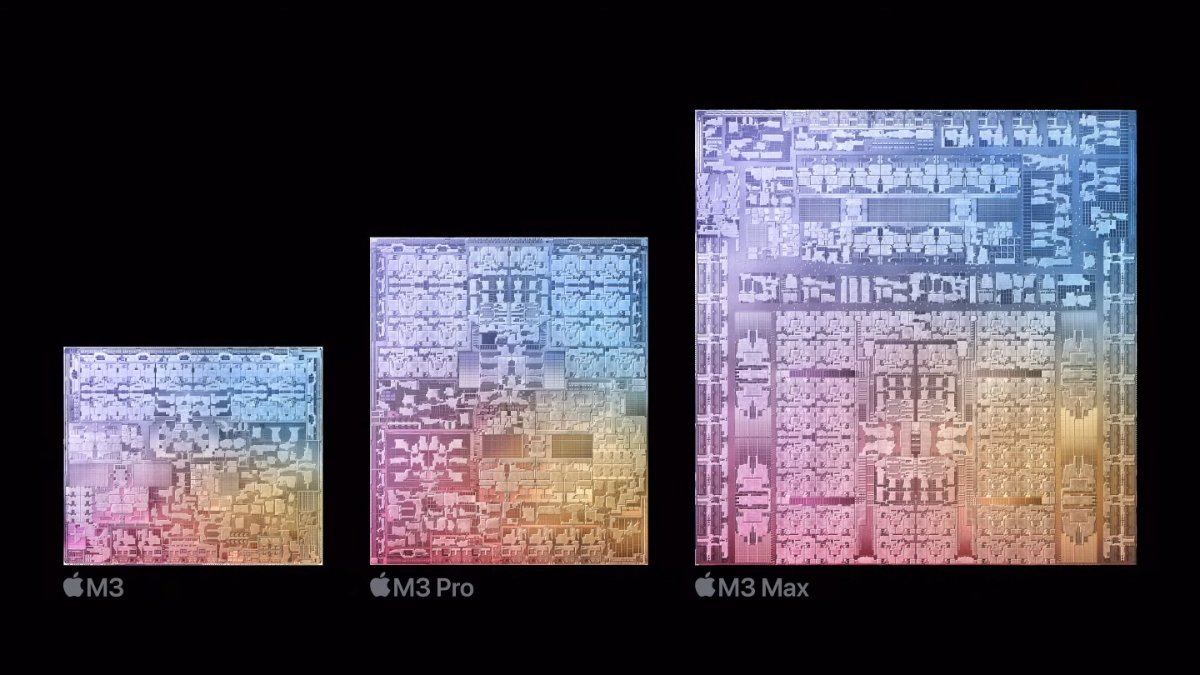
Apple revealed the next generation of Mac processors
Apple revealed the new M3 chip series at its "Scary fast" event on Monday, which was centered around the Mac. Before the initial orders reach customers next week, preliminary benchmark results will offer further insights into the M3 processor's performance.
Apple states that the entry-level M3 chip has an 8-core CPU that performs up to 35% quicker than the M1 and 20% faster than the M2. Additionally, its 10-core GPU is as much as 65% speedier compared to the M1 and about 20% faster than the M2.
New figures in the Geekbench database corroborate what Apple has asserted. For example, a Mac with an Apple M3 processor shows a score of 3,030 for single-core performance and a multi-core score of 11,694.
The data shows that the M3's performance metrics are notably higher than its predecessors. Specifically, a listing for an M1 iMac shows scores of 2,334 and 8.317 in single-core and multi-core performance, respectively.
Additionally, a Mac mini with a CPU of eight cores scored 2,631 and 9,742 in core performance.
While benchmark scores may not always accurately reflect performance in everyday use, they do offer a valuable means of verifying some of Apple's statements regarding performance improvements.
Read on AppleInsider


